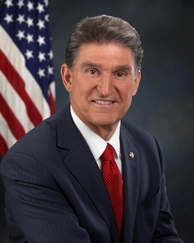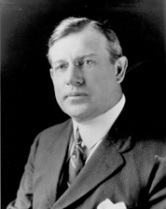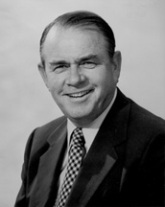Going Home? Joe Manchin Eyes Rare Electoral Feat in 2016
In 2016, West Virginia Democrat Joe Manchin may become just the sixth former governor in the last 100 years who then won a U.S. Senate seat only to return to his gubernatorial post

For the better part of a year, Manchin has stated he has not ruled out returning to his old post that he held from 2005 to 2010.
Democrat Earl Ray Tomblin is term-limited even though he will have not served two full terms come January 2017.
Manchin, a conservative Democrat, has been quite outspoken about his frustrations in dealing with both parties on Capitol Hill, telling the Associated Press last month, “The last four years are the most unproductive years of my working life.”
If Manchin, who says he will announce his political future by summer, does try to get his old job back, he will seek to accomplish a very rare feat in U.S. politics.
A Smart Politics review of gubernatorial election data finds that if Joe Manchin wins West Virginia’s gubernatorial election in 2016, he will become just the sixth politician in the direct election era to serve as governor, then U.S. Senator, and back to governor again.
Overall, a total of 144 governors in U.S. history have served interrupted terms as chief executive of their respective states.
(Three of these governors are currently in office: Republican Terry Branstad of Iowa and Democrats John Kitzhaber of Oregon and Jerry Brown of California).
Just 33 of these 144 governors also served in the U.S. Senate at some point in their political careers.
Seven of these 33 were U.S. Senators before becoming governor, including notables like Jeffersonian Republicans James Monroe of Virginia and DeWitt Clinton of New York.
Thirteen others did not take their U.S. Senate seats until after serving interrupted terms as governor including North Dakota independent Wild Bill Langer, Ohio Democrat Frank Lausche, and Missouri Republican Kit Bond.
That leaves just 13 politicians who served as governor, then won a seat in the U.S. Senate, and then returned to become governor once again.
Of these 13, just five won their U.S. Senate seats in the direct election era after the passage of the 17th Amendment a century ago.
The first to do so was New Jersey Democrat Arthur Moore.
Moore won the gubernatorial elections of 1925 and 1931 before winning the state’s 1934 U.S. Senate race.
After three years in office, Moore resigned from the upper legislative chamber, having won a third term as governor after a narrow victory in the state’s 1937 contest.

Edge won his first term as governor in the Election of 1916.
He then resigned before the end of his term, however, after winning a U.S. Senate seat in 1918.
Edge was easily reelected in 1924 and served until 1929 when he took a diplomatic post in the Hoover administration.
More than a decade later, Edge won the gubernatorial election of 1943 and served the full three-year term.
Colorado Democrat Ed Johnson had a remarkable uninterrupted run of electoral success in the Rocky Mountain State.
Johnson first won two two-year gubernatorial terms in the Elections of 1932 and 1934 and went straight on to win three terms in the U.S. Senate, where he served from 1937 to 1955.
Johnson opted against a fourth term in the chamber, but, without missing a beat, instead sought a return to the governor’s office, which he did successfully by defeating state legislator Donald Brotzman in the Election of 1954.
That same cycle saw Democrat Happy Chandler return to the governor’s mansion in Kentucky.
Chandler resigned near the end of his first stint as governor of the Bluegrass State in 1939 effectively appointing himself to the vacated U.S. Senate seat caused by the death of Marvel Mills Logan.
Unlike most governors in the 20th Century who pulled this political stunt, Chandler won the subsequent election to the seat in 1940.
Chandler resigned his Senate seat in 1945 to become the commissioner of baseball and was subsequently elected governor once again a decade later in 1955.

Bellmon was the first GOPer to win a gubernatorial race in Oklahoma with his victory in 1962.
Two years after his term ended he ousted three-term Democratic U.S. Senator Mike Monroney in 1968 and narrowly won reelection to the chamber during the post-Watergate Democratic wave of 1974.
Bellmon did not run for a third term in 1980, but, 24 years after his first gubernatorial victory, the GOPer won another term as governor in 1986.
Among the remaining eight politicians who achieved this feat prior to direct U.S. Senate elections, three added a second stint in the nation’s upper legislative chamber for a governor-U.S. Senate-governor-U.S. Senate political pathway:
● Massachusetts National Republican / Whig John Davis: Governor (1834-1835), U.S. Senator (1835-1841), Governor (1841-1843), and U.S. Senator (1845-1853)
● Tennessee Democrat Andrew Johnson: Governor (1853-1857), U.S. Senator (1857-1862), Military Governor (1862-1865), and U.S. Senator (1875). (And, of course, vice-president and president in between.)
● Iowa Republican Samuel Kirkwood: Governor (1860-1864), U.S. Senator (1866-1867), Governor (1866-1867), and U.S. Senator (1877-1881)
Only 10 states have seen an officeholder transition from the governor’s office to the U.S. Senate and back again to the governor’s mansion.
Kentucky (Democrats James McCreary and Happy Chandler), Mississippi (Democratic-Republican / Jackson Republican David Holmes and Republican Aldebert Ames), and New Jersey (Republican Walter Edge and Democrat Arthur Moore) have had two each.
Colorado, Iowa, Massachusetts, New Hampshire, Oklahoma, South Carolina, and Tennessee have each had one.
13 Governors Turned U.S. Senators Turned Governors in U.S. History
|
State
|
Officeholder
|
Party
|
Governor
|
US Senator
|
|
NH
|
John Langdon
|
Jeff-Rep
|
1788-1789, 1805-1809
|
1789-1801
|
|
SC
|
Charles Pinckney
|
Jeff-Rep
|
1789-1792, 1796-1798, 1806-1808
|
1798-1801
|
|
MS
|
David Holmes
|
Jeff-Rep; Jackson-Rep
|
1817-1820, 1826-1826
|
1820-1825
|
|
MA
|
John Davis
|
Nat’l Republican; Whig
|
1834-1835, 1841-1843
|
1835-1841; 1845-1853
|
|
TN
|
Andrew Johnson
|
Democrat
|
1853-1857, 1862-1865
|
1857-1862; 1875-1875
|
|
IA
|
Samuel Kirkwood
|
Republican
|
1860-1864, 1876-1877
|
1866-1867; 1877-1881
|
|
MS
|
Aldebert Ames
|
Republican
|
1868-1870, 1874-1876
|
1870-1874
|
|
KY
|
James McCreary
|
Democrat
|
1875-1879, 1911-1915
|
1903-1909
|
|
NJ
|
Walter Edge
|
Republican
|
1917-1919, 1944-1947
|
1919-1929
|
|
NJ
|
Arthur Moore
|
Democrat
|
1926-1929, 1932-1935, 1938-1941
|
1935-1938
|
|
CO
|
Ed Johnson
|
Democrat
|
1933-1937, 1955-1957
|
1937-1955
|
|
KY
|
Happy Chandler
|
Democrat
|
1935-1939, 1955-1959
|
1939-1945
|
|
OK
|
Henry Bellmon
|
Republican
|
1963-1967, 1987-1991
|
1969-1981
|
Compiled by Smart Politics.
Follow Smart Politics on Twitter.
